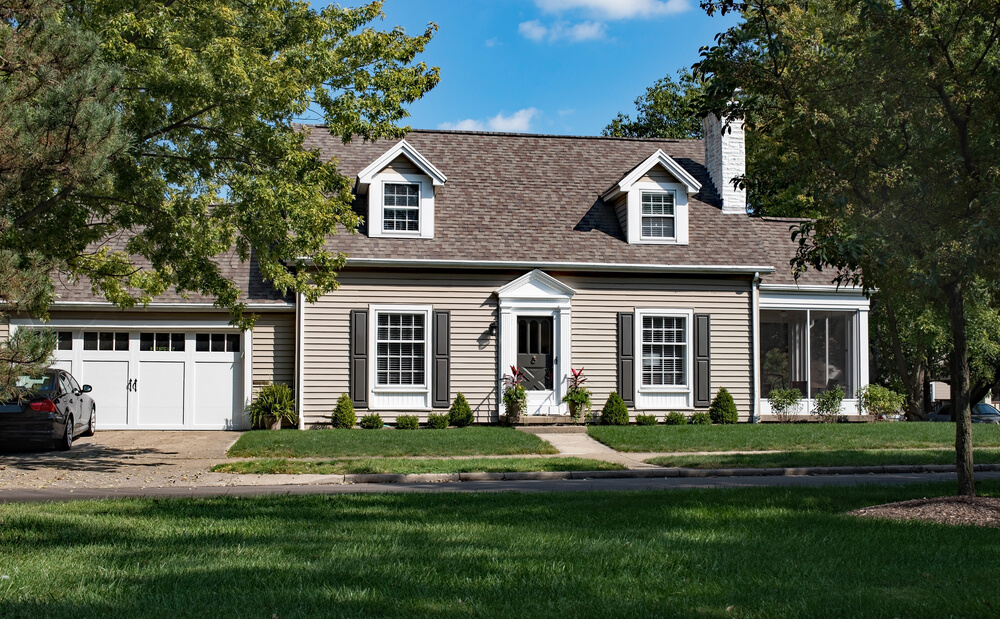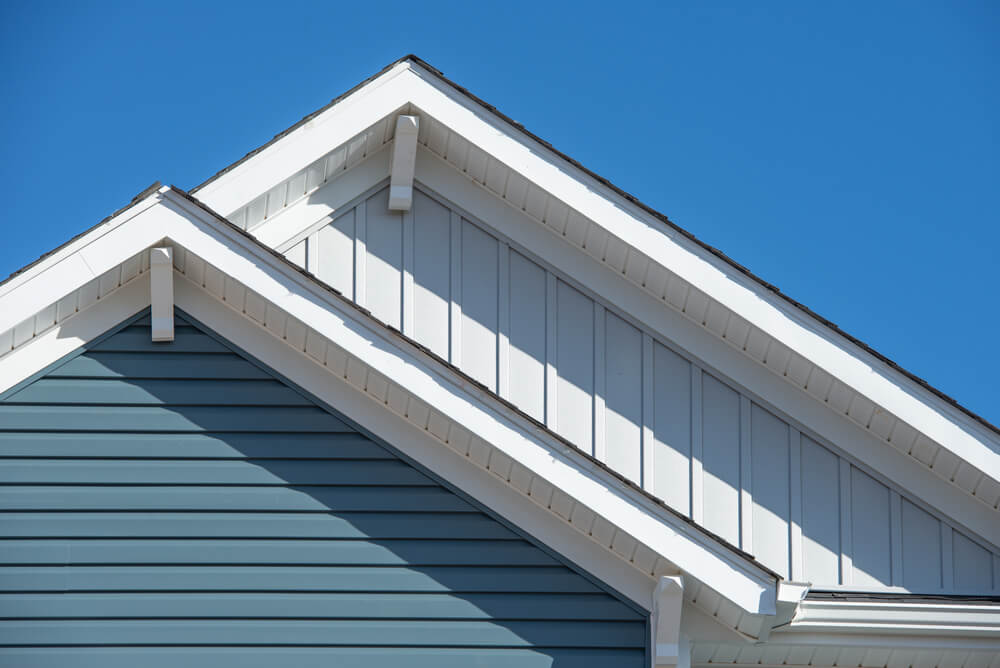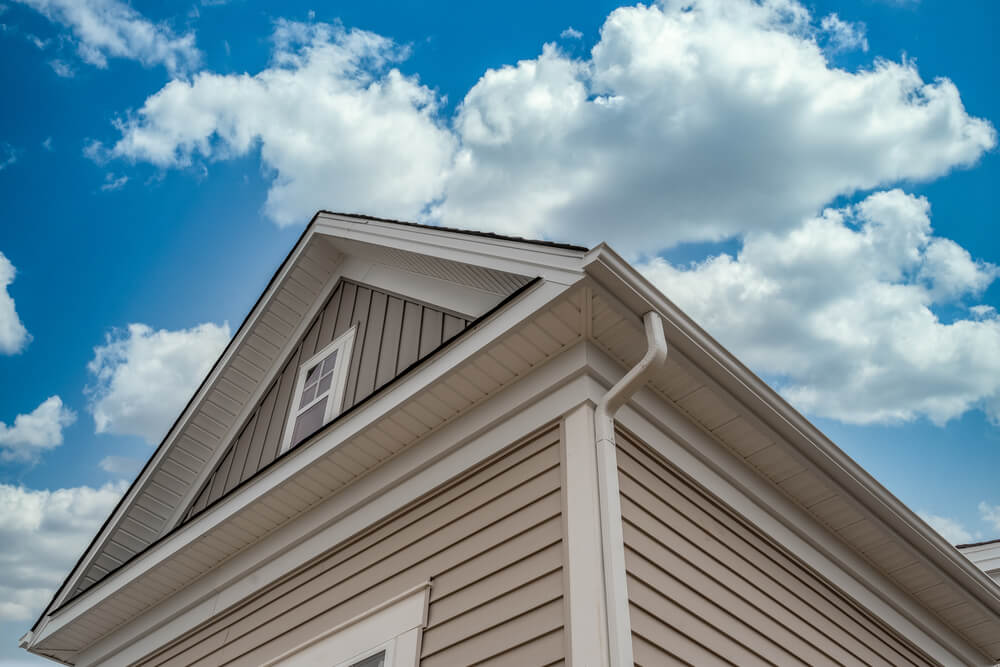Request Quote
Home | Our Blog | Vinyl Siding Types, Styles and Colors - A Complete List
Reviewed by Tomas Kalkys. President.
Qualifications: More than 20 years of experience in residential and commercial exterior remodeling.
Founding farther of Legacy Service.
Written by LegacyUSA Team
posted on August 10, 2022
Get Estimates From Roofing Pros

Vinyl siding comes in a variety of types, styles, and colors. It’s customizable for homeowners interested in style as much as practicality and durability. When you’re ready to install or replace your siding, that’s where our team at Legacy Service comes in. You can schedule a free consultation with one of our experts to learn about the different types of vinyl siding and determine which one would work best with your home and style preferences.
In this article, we’ll discuss various vinyl siding options to help you figure out which one to install on your house. Some popular vinyl siding styles include clapboard, dutch lap, wood grain, board and batten, and more. You can read more about them in the sections below. We’ll also answer some of the questions that we’re frequently asked about this topic.
At Legacy Service, we provide siding, windows, and roofing installation and replacement services to homeowners throughout eastern Pennsylvania, New Jersey, and Delaware. If you need a new roof as well, then you’ve come to the right place. Please contact us at 215-798-9790 or https://legacyusa.com/contact/ if you’re interested in a free estimate.
Vinyl siding is a plastic exterior that’s used for houses and small apartment buildings. It’s applied for decoration as well as weatherproofing, and it comes in a variety of many different styles and colors.
You may be surprised to learn that it once had a poor reputation for sagging, cracking, buckling, and fading. However, over the years, it’s become increasingly more reliable and popular among the general population with the help of technological and chemical improvements. Now, it’s the number one choice in America, and nearly one-third of homes across the United States have been fitted with different types of vinyl siding.
We understand that deciding what style to install on your house is a big decision that will affect your home’s appearance for years to come. Many variables go into choosing the best type of vinyl siding for your home, including the texture, color, plank width, insulation type, and price. That’s why we’re invested in helping you select one that you’re both delighted with and will serve you for many years.
To discover more about each of the vinyl siding styles for houses, continue reading. We discuss them in more detail in the sections below.

Once you’ve decided that you want vinyl, you’ll have to choose from one of the many exterior vinyl siding styles. It’s important to research each of the styles below so that you can determine which one would work best with your tastes and preferences. Options include clapboard, traditional lap, dutch lap, smooth, wood grain, beaded seam, board & batten, cedar shake, traditional shake, hand-split shakes, half-round (scalloped), and log vinyl siding.
If there is one or multiple that you’re interested in, please feel free to get in touch with a trustworthy contractor. Our team at Legacy Service is ready to serve you. One of our experts will be able to help you select a style for your house.
Clapboard, also known as horizontal or lap siding, is one of the traditional styles of vinyl siding used in the United States since Colonial times. In fact, it’s been applied to some of the most historic homes in the country.
It’s designed with long, narrow boards that are nailed lengthwise to the wall of the house. They look like wood in texture and profile, and they overlap each other from top to bottom. The overlap of the planks creates an interesting shadow line that’s more subtle than other overlapping siding options. If you’re interested in this vinyl siding type, contact us to learn more.
Traditional lap is similar to clapboard. It consists of overlapping planks that are wedge-shaped, meaning they’re narrower at the top than the bottom. The siding is installed starting at the bottom with the thicker bottom edge overlapping the bottom plank. This helps shed the water more efficiently, which, in turn, protects the house’s structure. The pattern also gives this style a defined look by creating strong shadow lines.
However, there’s one significant difference: Traditional lap is usually made of broader planks of 6” to 7” instead of narrower planks of about 4”. Contact us if you’re interested in traditional lap siding.
Dutch lap is another popular style of traditional lap siding. What differentiates it from other types is the fact that the degree on the angle of the bevel is sharper, which creates more of a contrast between the planks. This is due to lines that are more even and shadows that are more pronounced.
One of the main reasons why people choose dutch lap is the refined, hand-carved look. Vinyl siding is typically manufactured in sheets that mimic the appearance of this style. Instead of being installed one plank at a time, it goes up one section at a time. Consider dutch lap if curb appeal is high on your priority list.
It may be obvious, but smooth siding is known for having no dimension or texture on its surface. In fact, this style is what many people visualize when they consider vinyl siding. It’s meant to look like wood that has been freshly painted. Unlike dutch lap, you won’t see any shadow lines in this style. Its clean lines make it an excellent choice for modern architecture, and it’s also available in a wide variety of color options.
Wood grain has been stamped in a way to imitate natural wood grain patterns. Since humans have been using wood in buildings for centuries and have become very familiar with its appearance, this type of siding can provide a warm and comforting feeling to all who see it. It can be manufactured in both horizontal and vertical patterns, and it looks like the wood has been stained. The best part is that it’s more durable than wood, which can absorb moisture and rot. If you’re interested in wood grain, get in touch with your local experts today.
Beaded seam provides an even more interesting shadow line because each plank has a rounded notch cut into the bottom edge. In the past, most of the production was done by hand, so it was a very expensive and labor-intensive feature. In fact, it used to only be found on upscale homes. Now, beaded seam has a clean look, and it’s excellent for traditional homes. Any home would look nice with this type of siding since the bead accents the lines well. It’s also available in a wide range of colors. For more vinyl siding styles and colors, contact our team to schedule an appointment.
Board and batten is also called barn siding because it’s often used for barns and similar structures. However, it’s become increasingly popular among residential homes, too. This is one of the different styles of vinyl siding that’s considered the widest of all, with planks up to 12” wide. Boards are installed either horizontally or vertically, and narrow strips of wood called battens are nailed between the gaps in the boards. By choosing vinyl, you get a cozy and quaint aesthetic without needing extra work to install each wooden component. Everything comes together in a single board or panel.
Cedar shakes are as unique as they are beautiful. They’re one of the traditional types of vinyl siding for houses that were originally made by hand. During this labor-intensive process, a cedar log would be split lengthwise. Then, wedge-shaped sections of the cedar would be removed and attached to the wall. Lots of texture gives this style a rather coarse appearance, making it both unique and visually appealing. Real cedar shakes tend to dry out and turn gray over the years, but with vinyl, they’re manufactured in sheets to look like shingles. With vinyl, you can enjoy one of these vinyl house siding options without having to worry about the upkeep.
Traditional shake is also known as straight edge siding, and it’s exactly what the name implies. Even if its planks are textured, the edges will remain even and straight. Once the siding is installed, it will produce clean, crisp lines and show straight shadow lines. This type of vinyl siding for houses differs from cedar shake siding because cedar shakes are known to produce a rough appearance that has a lot of texture. Both are beautiful, so whichever type you choose is about your style preference. For traditional shakes, the individual panels may have plenty of texture, but the overarching run is clean and linear.
Hand-split shakes, also called staggered-edge siding, are much more similar to cedar options than traditional shakes. The overall appearance shows complex shadow lines once the individual shingles are installed. However, there is one distinct difference that differentiates it from cedar. Hand-split shakes can be manufactured in full panels, which can help make installation easier than if individual units are installed one by one. If you’re interested in installing a vinyl siding option for your house, get in touch with our team to schedule a free consultation. Not only will you get an expert opinion, but you’ll also find a variety of colors to choose from as well as other style options.
Half-round (scalloped) siding, sometimes called “fish scale,” provides an appealing and unique appearance to any home. This vinyl siding style option is characterized by its vinyl pieces that are manufactured in a half-round shape, which may come as no surprise based on the name. These half-round shingles create a picturesque appearance and look especially nice on gables. Property owners who are going for a historic look on their home will be pleased with the classical appearance of this style. Contact us to schedule an appointment to see all of your vinyl siding color options.
Log vinyl siding is an excellent way to give your property a rustic appearance with all the benefits of vinyl’s material. Log cabins are quite beautiful, but they can also be expensive and a lot of work to maintain. The good news is that vinyl is more affordable, and with this type of siding, homeowners can produce a similar appearance without all the expense and maintenance required of an actual log cabin. Additionally, this material will hold its color and withstand bad weather conditions while not yielding to insects or moisture. If you’re interested in these vinyl siding options for homes, contact us to schedule an appointment.

As you can see in the sections above, there are so many different vinyl siding types. While they’re all of high quality, each has its own advantages and disadvantages. It’s about finding the one that matches your tastes and preferences. In this section, we’ll answer the questions that we’re most frequently asked about types of vinyl siding for houses to help you make a more informed decision.
Whether you have an idea of what you’d like or you’d prefer guidance from a professional, get in touch with our team to schedule a free consultation. We provide siding installation and replacement services to homeowners throughout southeastern PA, NJ, and DE.
The different types of vinyl include clapboard, traditional lap, dutch lap, smooth, wood grain, beaded seam, board and batten, cedar shake, traditional shake, hand-split shakes, half-round (scalloped), and log vinyl siding.
Since there are so many different types of vinyl siding for houses, it can get overwhelming trying to decide which would work best for you. After all, this is a significant decision that will impact your home’s appearance and curb appeal for years to come. That’s why it’s best to consult with an expert before you make your decision. Our team provides free consultations to interested homeowners throughout PA, NJ, and DE.
Dutch lap is considered to be the most popular type among American homeowners. It’s similar to traditional lap, but the angle of the bevel is sharper, which creates more of a contrast between the planks. The goal of dutch lap siding is to create a hand-carved look, which looks beautiful on most homes.
Types that are close behind dutch lap in terms of popularity include clapboard and traditional lap. Clapboard dates back to Colonial times (when wood was used because vinyl wasn’t around yet). Traditional is similar to clapboard, but it creates stronger shadow lines.
Vinyl siding comes in many different styles. So, how do you know which one is currently covering your home? You can always ask a professional, but if you’d prefer to do it yourself, here are a few tips to help you identify which of the horizontal or vertical vinyl siding styles is covering your house. First, check out the texture and feel of your siding. Some types are smooth (such as board and batten) and other types have staggered edges (such as hand-split shakes). The next step is to determine the correct shape. For example, half-round (scalloped) siding comes in a half-round shape and cedar shakes are manufactured in sheets to look like shingles.
Vinyl is one of the most versatile siding products on the market today. It comes in an extensive variety of colors, sizes, and shapes for homeowners to choose from. Horizontal and vertical vinyl siding options usually come in widths that include 4”, 5”, 6”, and 7”. Clapboard is usually designed with long, narrow boards of 4”.
If you’re interested in installing or replacing your siding, then you’ll need to decide what’s best for your home. Fortunately, an experienced professional can help you when you schedule a personalized consultation. Contact our team to get started.
A few types of vinyl siding are designed to look like wood, including clapboard, wood grain, and log vinyl. What homeowners like about these types is that they have the charming appearance of wood while possessing the benefits of vinyl, from being durable to affordable. With clapboard, narrow planks are nailed to the wall of the house, overlapping each other from top to bottom and looking like wood in profile and texture. Wood grain looks like wood that has been stained, but it’s also more durable than wood. Log vinyl provides the rustic look of a log cabin, but it’s less expensive and requires less maintenance.
D4 means double 4 inches (4 inches multiplied by two), which is 8 inches wide plus the nailing ham and interlocking details. D5 means double 5 inches, which would make it 10 inches wide plus the nailing ham and interlocking details. Whether you select D4 or D5 for your home will depend on your personal tastes and preferences. Fortunately, our team at Legacy Service will help you choose between the two as well as a myriad of vinyl siding types and colors so that you can build the home of your dreams.
Yes, there are different widths of vinyl siding. It’s usually available in the following widths: 4”, 5”, 6”, and 7”. When you talk to your contractor, you’ll want to discuss various features of your siding, including the width, thickness, profile and texture, color, and price. Your local contractor will also be able to help you choose between the different types of vinyl siding trim.

Now it’s time to determine which one you should choose for your house. We’ve touched upon the various options in the sections above, and if you’re interested in one or multiple types, please get in touch with your local contractor. At Legacy Service, you can schedule a free consultation with one of our experts so that we can help you decide between new vinyl siding styles and more. If it’s time to replace your siding, contact our team at 215-798-9790 or https://legacyusa.com/contact/.
Posted on August 10, 2022 in Roof
Read our news
HOW LONG SHOULD A ROOF LAST? ELEMENTS
A lot of elements play a role in maintaining the integrity of the roof, but as a homeowner, the most important components to pay attention to are the underlayment, ventilation, and material.
DIFFERENT TYPES - DIFFERENT LIVES
Choosing the best roofing material for your home is the first important step in ensuring that you have the highest quality roof possible.
METAL ROOF VS ASPHALT SHINGLE ROOFING
Two of the most popular roofing materials on the market are metal and asphalt, and both offer different pros and cons to a customer.
Pros and cons of Asphalt Shingle Roofing
Replacing a roof is an expensive decision, and cannot only come down to cost.


